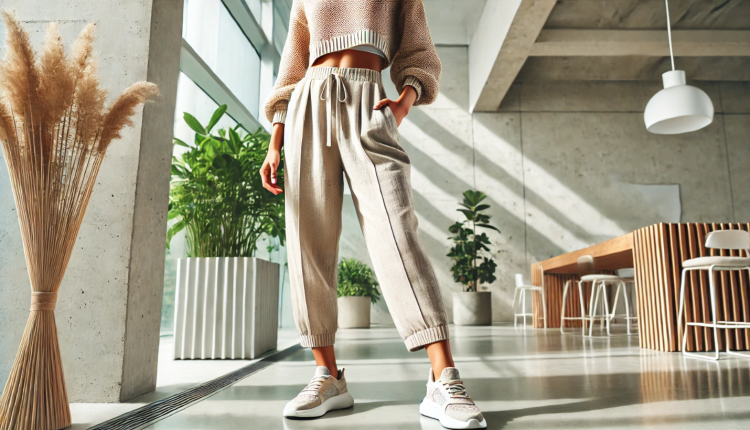Fashion has long been a medium for self-expression, reflecting personal tastes and cultural trends. In recent years, the intersection of fashion and wellness has gained prominence, emphasizing clothing’s role in promoting physical and mental well-being. This evolution underscores a holistic approach to style, where aesthetics and health converge to enhance overall quality of life.
The Rise of Athleisure: Merging Comfort with Style
Athleisure has revolutionized the fashion landscape by blending athletic wear with everyday clothing. This trend offers versatile apparel suitable for both exercise and casual outings, encouraging an active lifestyle without sacrificing style. High-quality, moisture-wicking fabrics provide comfort and functionality, making it easier for individuals to incorporate physical activity into their daily routines.
Sustainable Fashion: A Commitment to Environmental and Personal Health
The shift towards sustainable fashion reflects a growing awareness of environmental impact and personal well-being. Eco-friendly fabrics, free from harsh chemicals, offer superior comfort and reduce skin irritations. Embracing sustainable fashion aligns wardrobes with personal values, fostering a sense of integrity and mindfulness.
Therapeutic Fabrics: Innovations for Physical Comfort
Innovations in textile technology have introduced therapeutic fabrics designed to enhance physical health. Infrared-emitting textiles, for instance, absorb body heat and reflect it back as infrared energy, potentially increasing blood flow and aiding muscle recovery. Antimicrobial fabrics help combat bacteria, keeping clothes fresher and benefiting individuals with sensitive skin or allergies.
Color Psychology: Influencing Mood Through Wardrobe Choices
The colors we choose to wear can significantly impact our emotional state. Warm colors like red, orange, and yellow can stimulate energy and enthusiasm, making them suitable for active settings. Conversely, cool colors such as blue, green, and purple offer calming effects, promoting relaxation. Neutral tones provide stability and can serve as a grounding element in attire.
Adaptive Fashion: Empowering Through Inclusive Design
Adaptive fashion addresses the needs of individuals with disabilities or physical limitations, merging style with functionality. Features like magnetic closures, adjustable seams, and sensory-friendly fabrics enhance accessibility and comfort, promoting independence and dignity. This inclusive approach ensures that fashion is empowering for everyone.
Mindful Dressing: Personal Style as a Form of Self-Care
Personal style extends beyond aesthetics; it serves as a form of self-care. Selecting clothing that aligns with individual preferences and comfort can boost confidence and promote a positive self-image. Investing time in curating a wardrobe that reflects one’s identity contributes to overall mental well-being.
The Future of Fashion and Wellness
As fashion continues to evolve, its integration with wellness principles becomes increasingly evident. Designers are prioritizing health, comfort, and sustainability, recognizing that clothing choices profoundly impact overall well-being. This holistic approach to fashion encourages individuals to make mindful choices that enhance both their style and health.
Incorporating wellness into fashion choices fosters a balanced lifestyle where style and health coexist harmoniously. By embracing trends that prioritize comfort, sustainability, and personal expression, individuals can cultivate a wardrobe that not only looks good but also supports their overall well-being.


